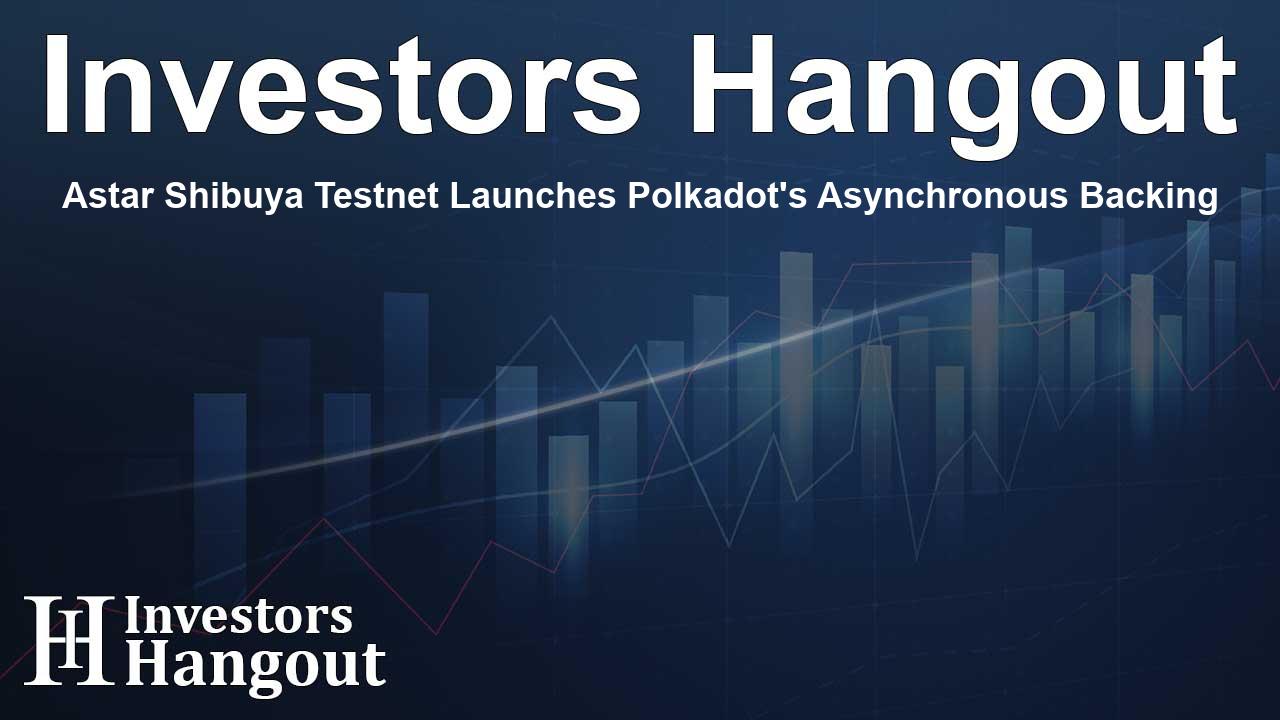Astar Shibuya Testnet Launches Polkadot's Asynchronous Backing

Polkadot’s Next Step: Asynchronous Backing Lands on Astar’s Shibuya Testnet
Astar Network’s Shibuya testnet has rolled out a notable upgrade: asynchronous backing. It’s a key piece of technology that moves Polkadot closer to its anticipated 2.0 release and is designed to improve how transactions are processed and how apps are built and shipped. This isn’t a cosmetic tweak. It changes how the network organizes work so developers and users feel faster, smoother interactions.
Faster Blocks, More Room: What Changes Right Now
With asynchronous backing in place, Polkadot’s block time is cut in half—down from 12 seconds to 6 seconds. At the same time, the maximum block weight rises from 0.5 seconds to 2 seconds. In practice, shorter blocks mean quicker confirmations and snappier feedback for users, while heavier blocks offer more room to fit transactions. Put together, the network can process more activity in parallel, which is a meaningful win for teams building on Astar and the people using their decentralized applications.
Astar Network: Built for Builders
Shibuya is Astar Network’s parachain testnet. It includes Ethereum Virtual Machine (EVM) capabilities and mirrors how the Shiden and Astar mainnets are configured. That makes it a reliable proving ground for developers who want to test how their decentralized applications behave before pushing to mainnet.
Astar Network itself is a Polkadot parachain focused on supporting decentralized apps with both EVM and WebAssembly (WASM) smart contracts. It also enables cross-chain communication through cross-consensus messaging (XCM), so dApps can talk to one another across different blockchain networks without leaving the Astar ecosystem.
Efficiency That Adds Up
The asynchronous backing upgrade also introduces the ability to reuse failed parachain blocks. Instead of throwing that work away, the network can make use of it, conserving resources and improving overall efficiency. Less waste, more throughput—an approach that supports a more sustainable way to run the system over time.
Throughput That Scales With Demand
Projections for asynchronous backing point to a jump in Polkadot’s transaction capacity from 100,000 to 1 million transactions per second. That added headroom helps the network absorb higher traffic without disruptions, which is especially important as decentralized applications grow more complex and attract more users.
The upgrade is also expected to speed up blockspace production and increase how many transactions fit in each block—reaching up to eight times the original throughput—while maintaining the network’s security guarantees. More room per block, produced more quickly, means the system can keep pace when demand spikes.
Market Check: DOT’s Measured Response
Despite the technical leap, the market reaction for DOT has been calm. Over the past 24 hours, the token rose 1.16% to about $4.23, a modest move that suggests cautious optimism. Prices often wait for usage to catch up with technology; builders move first, then sentiment follows.
Looking Ahead: The JAM Gray Paper
In a related update, Polkadot recently published the Join-Accumulate Machine (JAM) Gray Paper. It outlines a development strategy that blends elements from both Polkadot and Ethereum, underscoring a shared focus on continued innovation in a fast-changing blockchain landscape.
Frequently Asked Questions
What is asynchronous backing in Polkadot?
It’s an upgrade that reduces block time from 12 seconds to 6 seconds and increases capacity, allowing the network to process more transactions more quickly while keeping activity flowing smoothly.
How does the Shibuya testnet benefit developers?
Shibuya mirrors the setup of the Astar and Shiden mainnets and includes EVM support, giving teams a realistic environment to test and refine their decentralized applications before launching on mainnet.
What are the advantages of Astar Network?
Astar supports EVM and WASM smart contracts and offers cross-chain communication via XCM, helping dApps interact across multiple blockchain networks without leaving the Astar ecosystem.
How many transactions can Polkadot handle after the update?
With asynchronous backing, projected capacity rises from 100,000 to as high as 1 million transactions per second, with up to eight times the original throughput per block while preserving security.
What recent development has Polkadot released?
Polkadot introduced the Join-Accumulate Machine (JAM) Gray Paper, which lays out a strategy that draws on ideas from both Polkadot and Ethereum.
About The Author
Contact Henry Turner privately here. Or send an email with ATTN: Henry Turner as the subject to contact@investorshangout.com.
About Investors Hangout
Investors Hangout is a leading online stock forum for financial discussion and learning, offering a wide range of free tools and resources. It draws in traders of all levels, who exchange market knowledge, investigate trading tactics, and keep an eye on industry developments in real time. Featuring financial articles, stock message boards, quotes, charts, company profiles, and live news updates. Through cooperative learning and a wealth of informational resources, it helps users from novices creating their first portfolios to experts honing their techniques. Join Investors Hangout today: https://investorshangout.com/
The content of this article is based on factual, publicly available information and does not represent legal, financial, or investment advice. Investors Hangout does not offer financial advice, and the author is not a licensed financial advisor. Consult a qualified advisor before making any financial or investment decisions based on this article. This article should not be considered advice to purchase, sell, or hold any securities or other investments. If any of the material provided here is inaccurate, please contact us for corrections.
